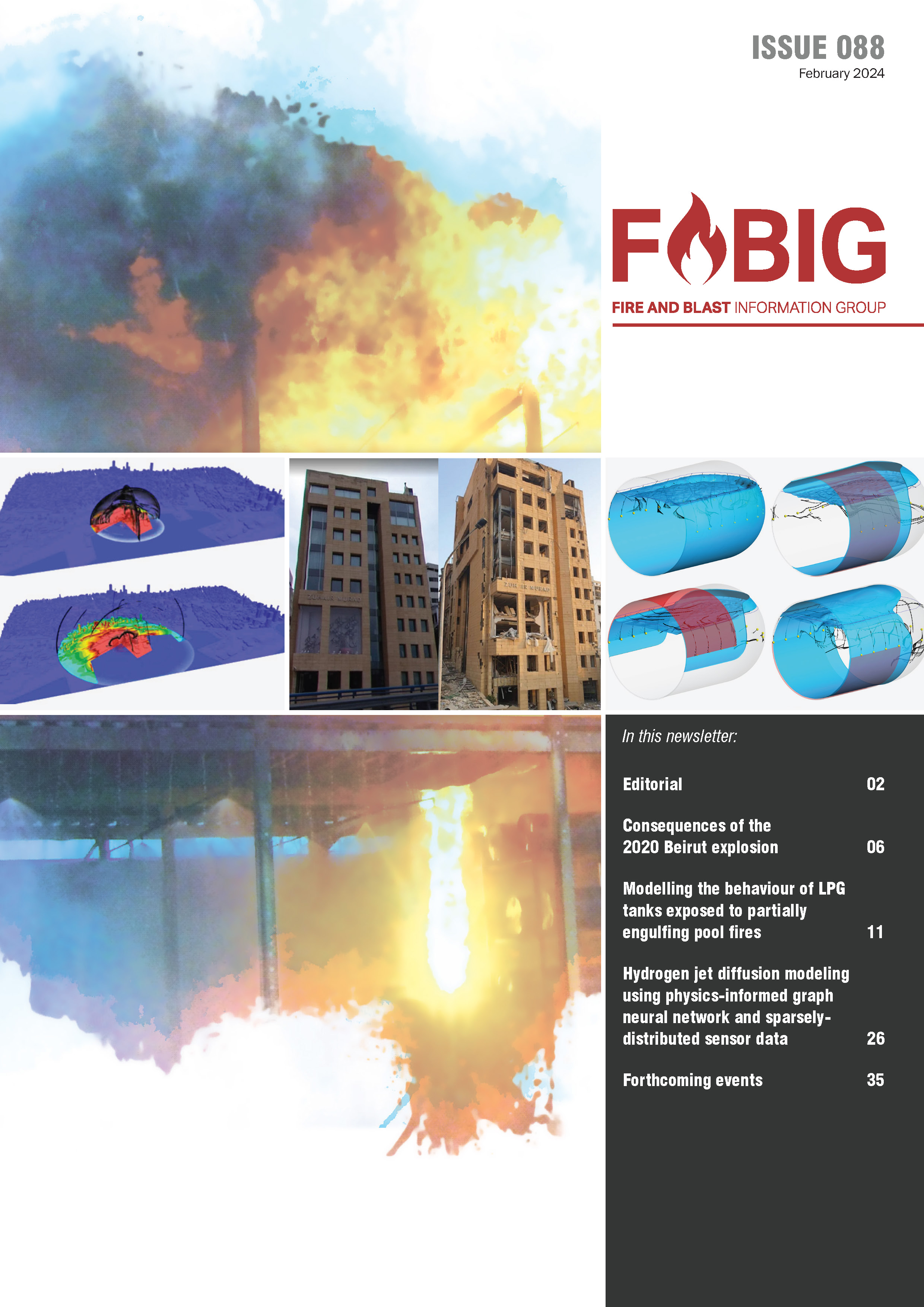Newsletter Issue 088

FABIG Members: Log-in to access all FABIG resources LOG IN
CONTENTS:
This FABIG Newsletter comprises the following:
- Editorial: FABIG to participate in International Process Safety Week (IPSW) in December 2024
G. Vannier - The Steel Construction Institute (SCI) - Consequences of the 2020 Beirut explosion
S. Rigby1,2, A. Ratcliff1, S. Clarke1, D. Farrimond1, S. Fay3 and W. Wholey4 - 1University of Sheffield, 2Arup Resilience (UK), 3AWE, 4Arup Resilience (USA)
This paper presents a case study of the 2020 Beirut explosion and efforts to better understand its consequences. Video footage posted on social media shortly after the explosion was first used to derive an approximate explosive yield by compiling the radius-time profile of the blast wave and correlating with well-known semi-empirical relations. This was followed by a detailed physics-based simulation of the explosion using the estimated yield. The results were used in a forensic assessment of observed building damage. - Modelling the behaviour of LPG tanks exposed to partially engulfing pool fires
G.E. Scarponi, V. Cozzani, G. Antonioni and F. Doghieri - University of Bologna
This paper presents a parametric analysis to investigate the behaviour of a 1.9 m3 bullet LPG tank in partial engulfment fire scenarios. A set of case studies were defined, varying the positions of the zone exposed to fire and the filling degree of the tank. These were simulated using a CFD modelling approach previously validated against partial engulfment fire test results, with a view to demonstrating how CFD simulations may be considered as “digital twins” of fire tests and used to investigate specific safety aspects in detail. - Hydrogen jet diffusion modeling using physics-informed graph neural network and sparsely-distributed sensor data
J. Shi, X. Huang and A.S. Usmani - The Hong Kong Polytechnic University
This paper introduces a physics-informed graph deep learning approach (Physic_GNN) for efficient and accurate hydrogen release and diffusion prediction using sparsely-distributed sensor data. Publicly available experimental data of hydrogen jet diffusion was applied to demonstrate the higher accuracy and computational efficiency of the proposed approach.
Non-member price: £75.00
Add to Basket
Published in: February 2024
Keywords:
Consequences of Beirut explosion / Modelling of LPG tank subjected to pool fire / Hydrogen dispersion modelling using GNN
Online purchase options:
Non-Members of FABIG are able to purchase PDF copies of the FABIG Newsletters.